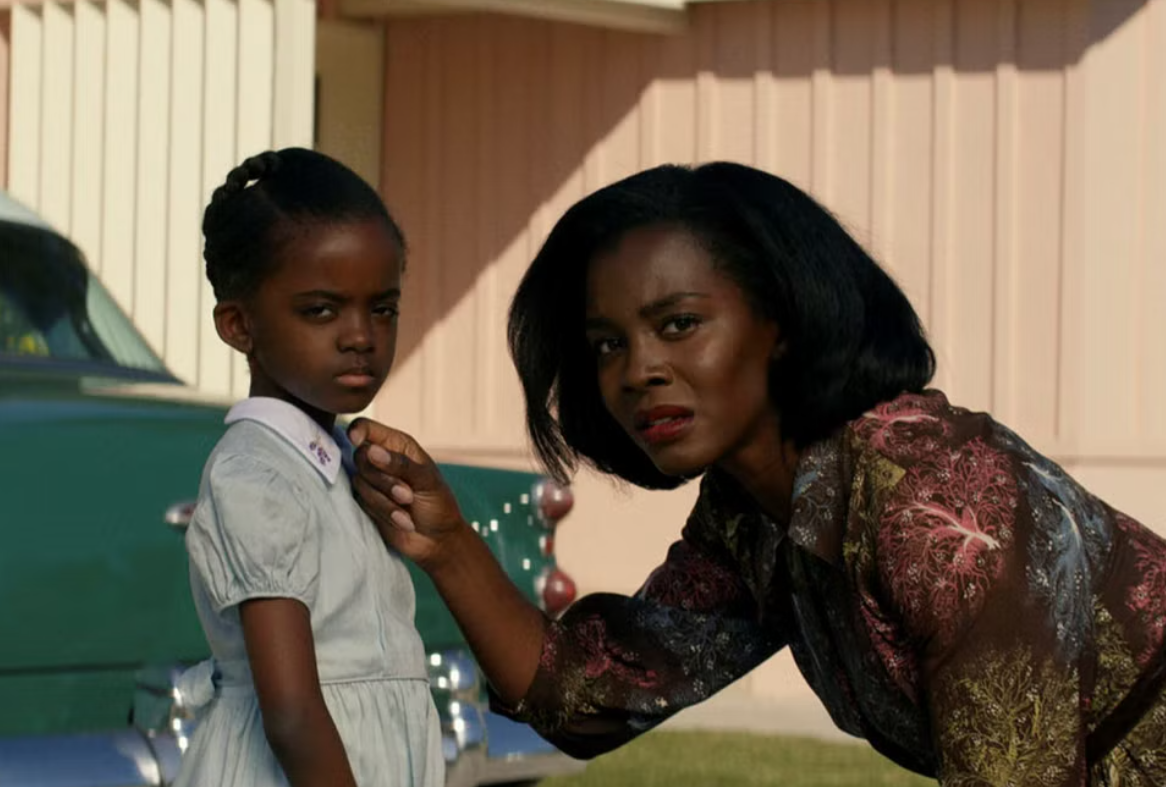Horrors of History and Colonial Imaginaries
The Construction and Representation of Black Embodiment in THEM (2021)
Full article available at: https://www.lcir.co.uk/simp/wp...

"In recent decades, visual culture has come to the fore of critical analysis as a site of resistance to or reinforcing of coloniality (Hanchey 2020), with the dynamics of encoding visual products, their internal regimes of visuality, and their eventual decoding representing crucial stops in analysis. Ways of “archiving”[i] and interrogating visual histories constitute a prime focus in addressing the role of “imagination as a method to decolonize, encode, and liberate representations of Blackness of art and design…centre[ing] on the interior lives, memories, connecting identities and lived experiences of Black people.”[ii]
Our aim is to question the subversive, decolonial potential of visual representations of Blackness and embodiment, when employed as sites where imagination recasts and instrumentalizes history. The object of analysis is the television series Them (Little Marvin, 2021); conventions of cinematography, narrativity, and framing in horror as a visual genre are addressed to investigate how this product of visual culture taps into the history it purports to depict, while informing current discourses on the pervasive experience of racism and Black trauma. Placed in 1950s’ American suburbia, the show rests on white terror as narrative and visual trope in telling the story of the Emorys, a Black family who move into a white neighbourhood and enter a 10-day period of terror and violence, inflicted by their white neighbours, as well as by supernatural forces.
Contemporary racism and the image of the dead, injured, or terrorized Black body are placed in the broader historical heritage of such images, as instituted by the structures of chattel slavery in the US and extractive and settler colonialism starting with the 16th century.
For a theoretical framing, we employ Kathrine Mkittrick’s concept of “Black geographies,” (2016) Alison Landsberg’s notion of “horror verité,” (2018); we draw on Mark Sealy’s look at race and the “economy of display” in visual culture (2019), as well as notions of seeing and witnessing in the deployment of visual culture and the articulation of visual histories. Saidiya Hartman’s account of “Black injured bodies” (1997) is placed in a context of “necropolitics,” coined by Achille Mbembe to describe “political order nearly everywhere reconstituting itself as a form of organisation for death” (Mbembe 2019, 27).
Colonial imagination – and imaging – is important to consider, as the analysis draws on broader critiques of modernity. The “molecular terror” of modernity, with its ordering of how the world is to be known, sensed, and produced, leads to the “blurring relations between violence, murder, and the law…the norm and the exception” (ibid.). Engaging with this critique, from a perspective of history, leads us to Walter Benjamin’s assertion that “to articulate the past historically does not mean to recognize it ‘the way it really was’ (Ranke). It means to seize hold of a memory as it flashes up at a moment of danger” (Benjamin, cited in Landsberg 2018, 640). In Them, the articulation of the past blends the historical with the speculative, not least through cinematic conventions that present as modalities of visually and narratively exploring resistance.
The “hold on memory” as manifested in Them constructs a particularly porous version of the past – danger, trauma, injury, death, dispossession, they all violently enter memory through the “cracks and fissures” (Little Marvin 2021) in subjectivity, as emphasised by the show’s creator, Little Marvin. “Times of crisis” complicate the formation of subjectivity (Mbembe & Roitman 1995) and lead to a “lack of coincidence between the everyday practice of life (facticity) and the corpus of significations or meanings (ideality) available to explain and interpret what happens” (ibid. 324). In its disorientation, the subject looks for referents in its own “historical time,” to explain the crisis or trauma; “for lack of these referents, the crisis is exiled to the domain of the inexplicable” (ibid. 338). Interestingly, the inexplicable is what most commonly fuels the horror genre, and it is this continuum of crisis and horror trope arched over the series Them that we find particularly important, both in how it is conventionally used, and how it is restructured as a nuance of the genre.
Following a conceptual discussion, we then turn to a visual analysis of the series, which focuses on the use of conventions of the horror genre, tropes and narrative constructions, as well as visual tropes and cinematic moods. The analysis follows three main conceptual areas, as they emerge from theoretical lenses applied: Body; Thresholds; Containment. We have identified these three dimensions to be constitutive in Them, as they articulate matters of ontology, spatiality, and agency, all crucial to understanding the (or speculating on) possibility of recovering a geography and a sense of place for Black bodies in visual culture and history. A final section in the analysis concerns the act of seeing and the complex layering of witnessing, which, we argue, this series helps to address."
[...]
Article co-authored with Maria Duarte Furtado Marques
[i] https://sandberg.nl/temporary-programme-blacker-blackness
[ii] Ibid.
